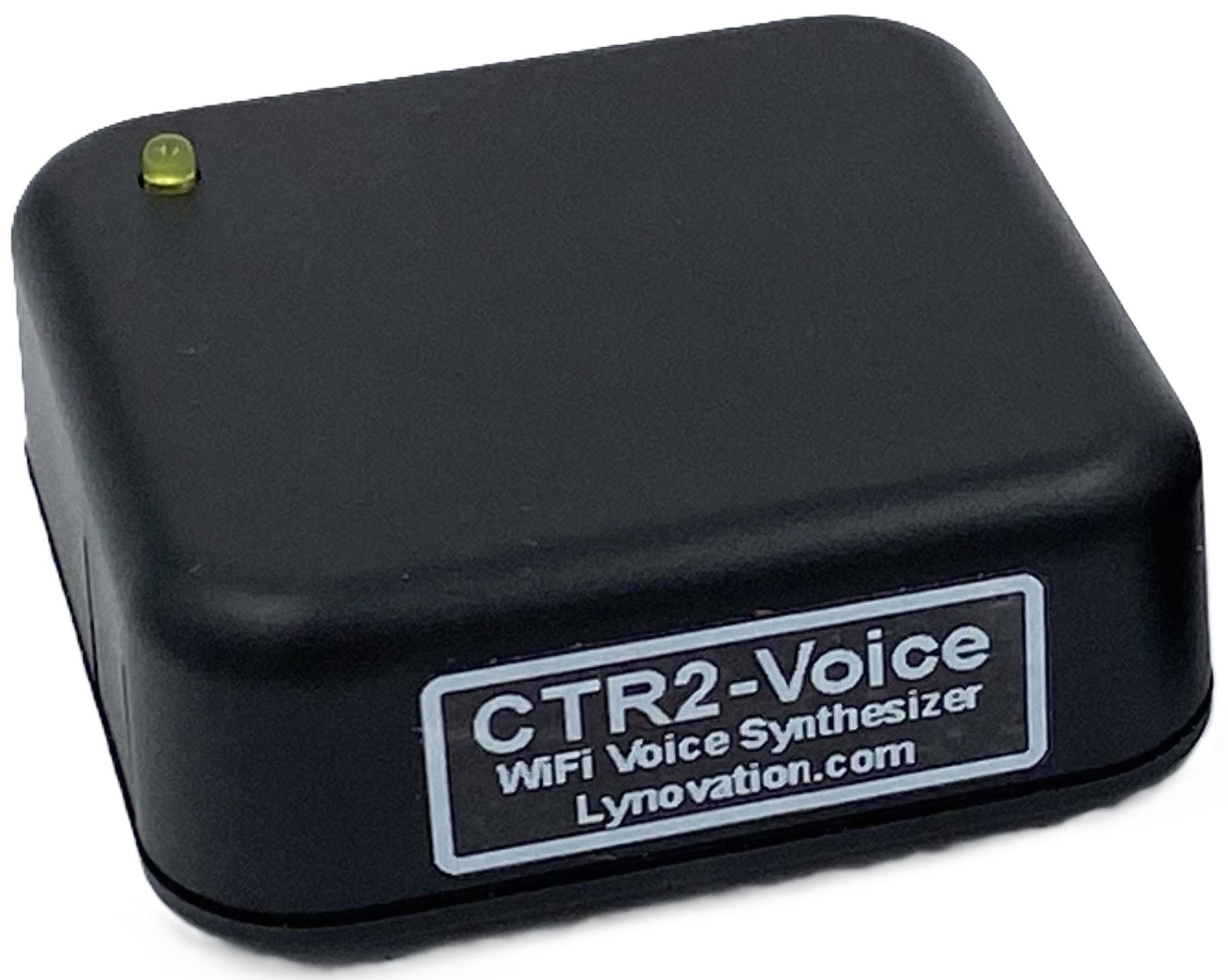In December 2023 I started working with several blind hams in an effort to make CTR2-Micro more accessible to the blind and sight-limited ham community. The first change came with the elimination of the “busyness” on this site (I removed the automated features that drive screen readers crazy) and the inclusion of the Text Report feature in the Micro’s v1.04 firmware. This report optimized the terminal output to make screen readers easier to use.
The next logical step was to add a voice synthesizer and CTR2-Voice was born. I’ll refer to it as simply the Voice here. This unit is a self-contained, WiFi connected, text-to-speech synthesizer that leverages the firmware in the Micro that supports the Code and Text reports. A new Voice report was included in CTR2-Micro firmware v1.05.01 to support the Voice.
Podcasts
Gena, MOEBP, did a podcast on BlindHams.com where she talked about using CTR2-Micro with CTR2-Voice. You can listen to it here. Robert, NC5R, followed up with a podcast discussing using CTR2-Micro with CTR2-Voice for blind and sight limited hams. You can listen to his podcast here. I was invited to do a presentation to the BlindHams.com group back in January. You can listen to that presentation here.
YouTube
You can watch the CTR2-Voice Operation video on YouTube here:
The Voice is not just for blind and sight-limited operators. Sighted operators will find it useful when operating their Micro in standalone mode too. The new WiFi Access Point mode opens up many possibilities for portable and mobile operation.
The Voice can operate in WiFi Station mode as shown here:

Or it can be used in WiFi Access Point mode without an external router as shown here:

A Little About the Voice
The first thing you’ll notice about the Voice is that it is small. The hardware was designed to fit in the same enclosure I use for CTR2-Micro (60mm x 60mm x 20mm). It’s also simple, with no user controls, just a USB-C port for power, a 3.5mm (1/8″) phone jack for audio out, and a status LED. Power can be provided by a USB port on your computer, a phone charger, or a USB battery bank. No physical connection to your computer or to the Micro is needed once you’ve set up your WiFi credentials in the Voice. The audio output is transformer isolated and DC blocked to eliminate ground loops. This means it can connect to any powered speaker you have. If you don’t have one thrift stores have a ton of them for under $5 and Amazon sells a wide variety including battery operated units. It can drive a small set of headphones directly and it has a level pot that allows you to reduce the level down to Mic levels to use it with the Mic input on your computer’s sound card or your station audio mixer. And before you ask, no, the Voice doesn’t support Bluetooth headphones or speakers.
All settings are handled in the Voice Settings menu in the Micro’s Configuration->Report menu. You can change the volume, tone, and speed of the voice along with a few other settings.
Not a Ham Pod Replacement
If you’ve been using a HamPod to operate your radio, please understand that CTR2-Micro and CTR2-Voice are not meant to to be a one-to-one replacement. The Micro doesn’t offer monitoring and control over every parameter on your radio and is not custom programmed for a specific radio the way the HamPod was. It supports a generic set of parameters that allow you to control the basic functions of many radios from the Micro. In other words, the user interface for every radio the Micro controls looks about the same regardless of the radio. Those have used both systems have noted that the HamPod is better at some tasks while the Micro+Voice is better at other tasks.
Frequency and mode control are available for all radios the Micro supports. RIT is available on most of them. The Flex, Icom, newer Kenwoods, Yaesu FTdx models, and Elecraft radios in general support Rx/Tx selection, antenna selection, antenna tuner control, volume, squelch, bandwidth, noise blanker on/off/level, noise reduction on/off/level, notch filter on/off, RF gain and attenuation, and AGC. In addition, Flex CAT supports AGC-T control, VOX, and network PTT and Key control. The Kenwood and Icom radios also support network PTT.
Unlike the voice synthesizers built into many rigs, the Micro+Voice announces changes in the parameters it monitors as you make changes on the Micro or the radio without requiring you to press a button. Tune the radio and a second or so later, the Voice reports the frequency change. Change the power output on the radio and the Voice reports the new power.
Currently In Stock!
I have a small stock of CTR2-Voice units ready to ship. You can find it in my new online Shop.
You can find out more about the Voice by downloading the operation manual here.
Let me know if you have any suggestions for improvements on any of the CTR2 products.
73, Lynn, KU7Q
